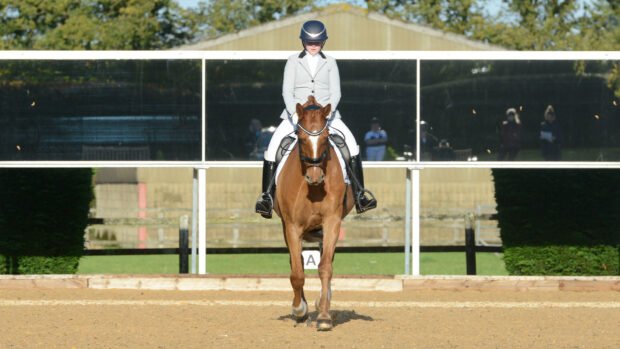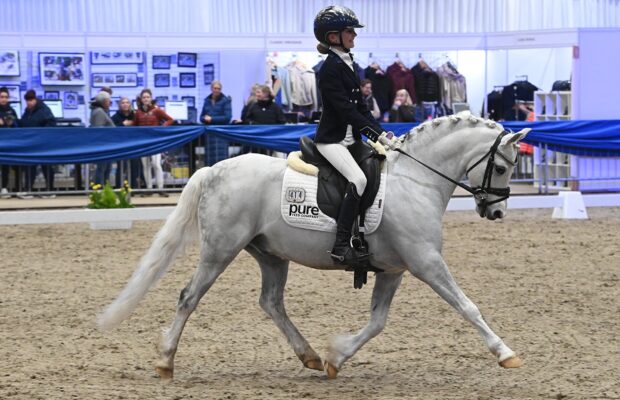Alice Peternell (née Wilson) competes successfully in dressage and is currently campaigning Welsh cob stallion Cynheidrefawr Crème De La Crème towards grand prix. Alice, a level three UKCC dressage coach, trains under the banner AP Equestrian from her Wiltshire base.
Training the stars
The pony I’m competing, Cynheidrefawr Crème de la Crème (pictured) is a Welsh section D, so isn’t bred for dressage. I’ve had to find ways of training him to get the best out of him, and ensure he is forward and reactive to my aids. Using plenty of transitions in our training has really improved his way of going. He has improved beyond measure, going way beyond my initial expectations.
Riding correct transitions is important at whichever level you compete. How accurate the transitions are and how balanced the horse is throughout them makes the difference between the winner and the rest of the class. Particularly in downward transitions, the rider must ride forward into them rather than just pulling on the reins.
Transitions teach the rider to use their seat and leg, and to be lighter with the hand. Riding transitions on different lines — on the straight, or on a circle — helps the rider execute them better. This is because they must ensure their aids are precise and accurate to keep the correct shape and bend, while asking for the transitions.
It also teaches the horse not to pull by encouraging him to sit on his hindlegs.
Tackling the issue
1. Start by riding transitions from trot to walk and then forward into trot again. Next, progress from trot to almost walk and then trot forward again. This encourages the horse to think forward into the walk and be able to keep an active hindleg.
2. Next, ride a very collected trot (think half-steps), then halt. This keeps the activity and helps stop the horse falling on to the forehand into the halt. Make sure the horse is working into a soft contact and the rider is making the downward transition from the seat and leg, not just the reins.
3. Introduce 10-metre circles, using the whole arena. When riding transitions on a circle, the horse is naturally around your inside leg. It’s a good place to start because the horse finds it easier.
4. Walk a 10-metre circle and make a transition to canter a stride away from the fence or wall as you approach it. Asking the horse to face the fence helps him to back off.
5, Canter a few strides straight on the track and repeat the 10-metre circle in canter before making a transition to walk again. Repeat the exercise around the arena.
Continues below…

What is medium trot, and what are the benefits for your horse?

Subscribe to Horse & Hound magazine today – and enjoy unlimited website access all year round
Consider this…
- Count to three, then make a transition. For three strides, collect the canter and count. This helps maintain the rhythm of the pace.
- Use forward and back transitions within canter to keep it active.
- Be careful the horse isn’t heavy in the hand rather than collected; transitions within the canter can help. If the horse is getting long and flat, making a transition to collected canter will help him sit back on his hocks again.
- For downward transitions I sit deeper, half-halt with my outside rein, and like to feel I can give with the rein. I want to be able to lighten the hand into the walk so the horse is not balancing on it.
For all the latest news analysis, competition reports, interviews, features and much more, don’t miss Horse & Hound magazine, on sale every Thursday.




